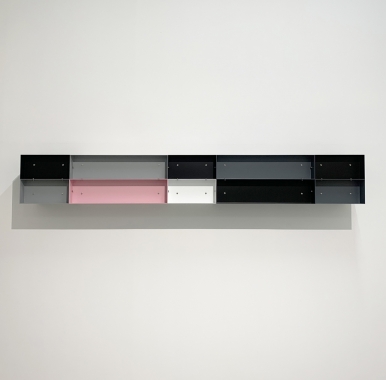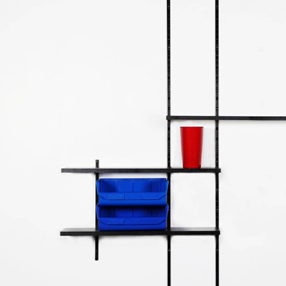본문

단체전
2014, 사물학-디자인과 예술, 국립현대미술관, 과천
추가정보
His first solo exhibition, of expressionist paintings, opened in New York in 1957. His artistic style soon moved away from illusory media and embraced constructions in which materiality was central to the work. He would not have another one person show until the Green Gallery in 1963, an exhibition of works that he finally thought worthy of showing. Humble materials such as metals, industrial plywood, concrete and color-impregnated Plexiglas became staples of his career. Most of his output was in freestanding "specific objects" (the name of his seminal essay of 1965), that used simple, often repeated forms to explore space and the use of space. In this essay, Judd found a starting point for a new territory for American art, and a simultaneous rejection of residual inherited European artistic values, these values being illusion and represented space, as opposed to real space. He pointed to evidence of this development in the works of an array of artists active in New York at the time, including Jasper Johns, Dan Flavin, George Ortman and Lee Bontecou. The works that Judd had fabricated inhabited a space not then comfortably classifiable as either painting or sculpture and in fact he refused to call them sculpture, pointing out that they were not sculpted but made by small fabricators using industrial processes. That the categorical identity of such objects was itself in question, and that they avoided easy association with well-worn and over-familiar conventions, was a part of their value for Judd. He displayed two pieces in the seminal 1966 exhibit, "Primary Structures" at the Jewish Museum in New York where, during a panel discussion of the work, he challenged Mark di Suvero's assertion that real artists make their own art. He replied that methods should not matter as long as the results create art; a groundbreaking concept in the accepted creation process. In 1968, the Whitney Museum of American Art staged a retrospective of his work which included none of his early paintings.
In 1968 Judd bought a five-story building in New York that allowed him to start placing his work in a more permanent manner than was possible in gallery or museum shows. This would later lead him to push for permanent installations for his work and that of others, as he believed that temporary exhibitions, being designed by curators for the public, placed the art itself in the background, ultimately degrading it due to incompetency or incomprehension. This would become a major preoccupation as the idea of permanent installation grew in importance and his distaste for the art world grew in equal proportion.
Throughout the 1970s and 1980s he produced radical work that eschewed the classical European ideals of representational sculpture. Judd believed that art should not represent anything, that it should unequivocally stand on its own and simply exist. During the seventies he started making room sized installations that made the spaces themselves his playground and the viewing of his art a visceral, physical experience. His aesthetic followed his own strict rules against illusion and falsity, producing work that was clear, strong and definite. As he grew older he also worked with furniture, design, and architecture.
In the early seventies Judd started making annual trips to Baja California with his family. He was very affected by the clean, empty desert and this strong attachment to the land would remain with him for the rest of his life. In 1971 he rented a house in Marfa, Texas as an antidote to the hectic New York art world. From this humble house he would later buy numerous buildings and a 60,000 acre (243 km²) ranch, almost all carefully restored to his exacting standards. These properties and his building in New York are now maintained by the Judd Foundation.
In 1976 he served as Baldwin Professor at Oberlin College in Ohio. Beginning in 1983, he lectured at universities across the United States, Europe and Asia on both art and its relationship to architecture.
In 1979, with help from the Dia Art Foundation, Judd purchased a 340 acre (1.4 km²) tract of desert land near Marfa, Texas which included the abandoned buildings of the former U.S. Army Fort D. A. Russell. The Chinati Foundation opened on the site in 1986 as a non-profit art foundation, dedicated to Judd and his contemporaries. The permanent collection consists of large-scale works by Judd, sculptor John Chamberlain, light-artist Dan Flavin and select others, including David Rabinowitch, Roni Horn, Ilya Kabakov, Richard Long, Carl Andre and Claes Oldenburg and Coosje Van Bruggen. Judd's work in Marfa includes 15 outdoor works in concrete and 100 aluminum pieces housed in two painstakingly renovated artillery sheds.
Artworks
Shows on Mu:um
-
리움 현대미술 소장품전
리움미술관
2025.02.27 ~ 2025.12.31
-
EVERYWHERE & HERE...
더페이지 갤러리
2020.10.22 ~ 2021.01.23
-
사물학-디자인과 예술
국립현대미술관
2014.06.05 ~ 2014.10.05













